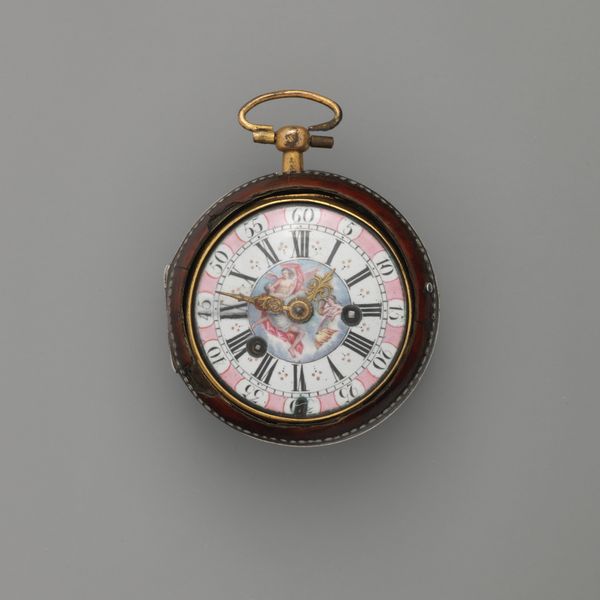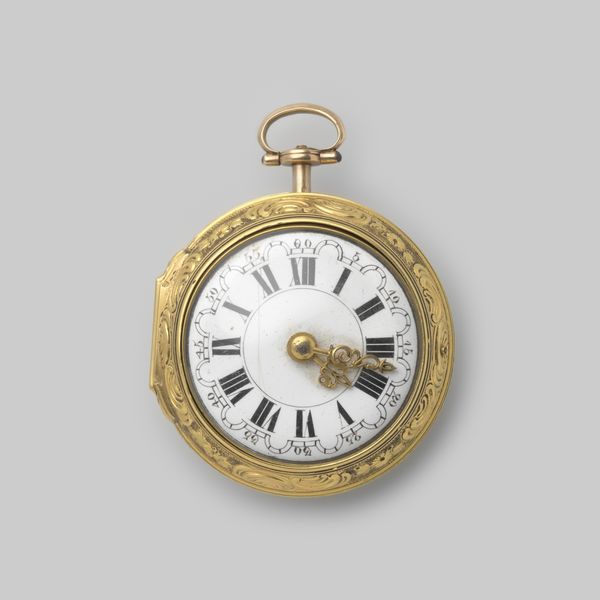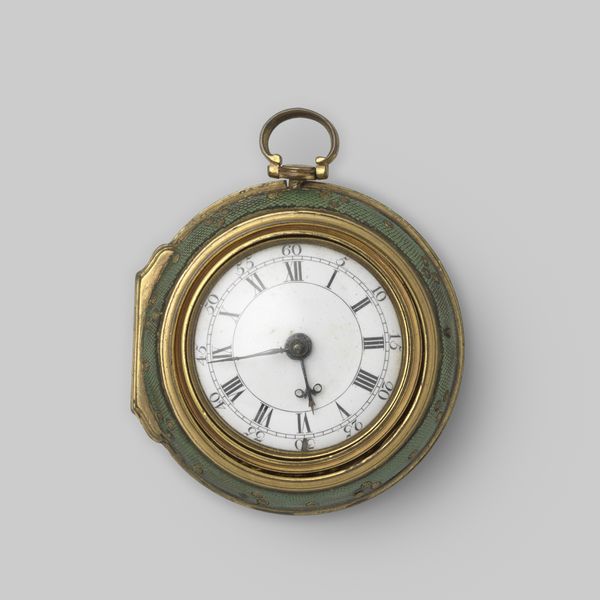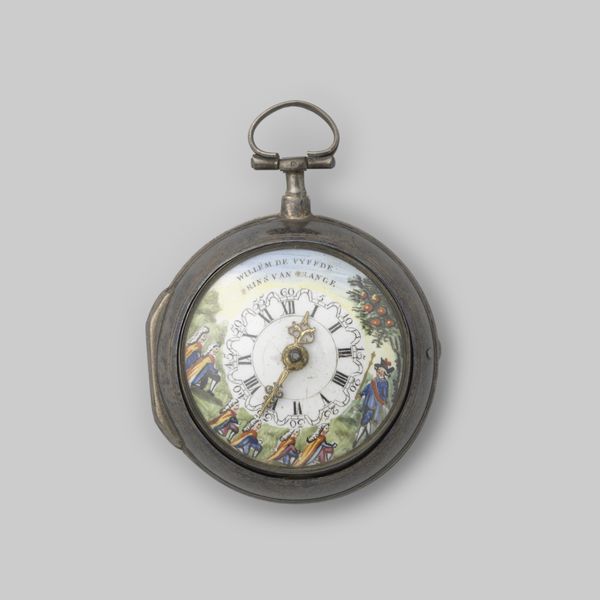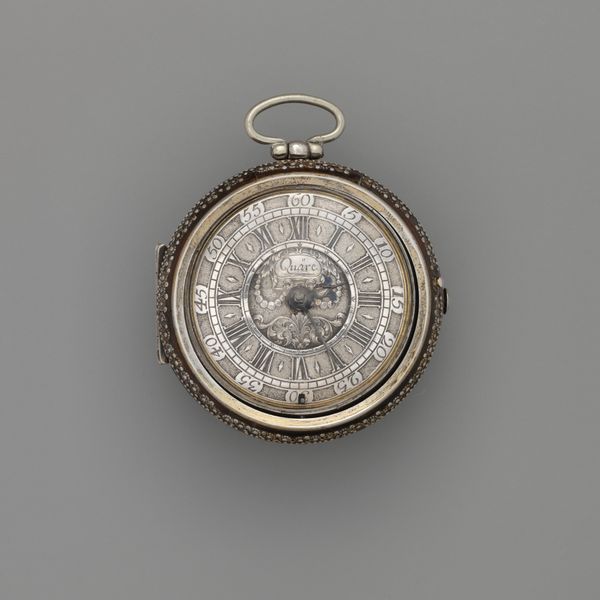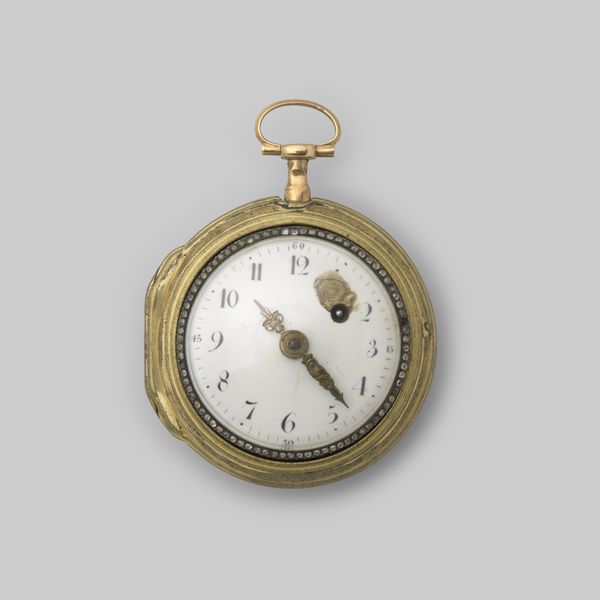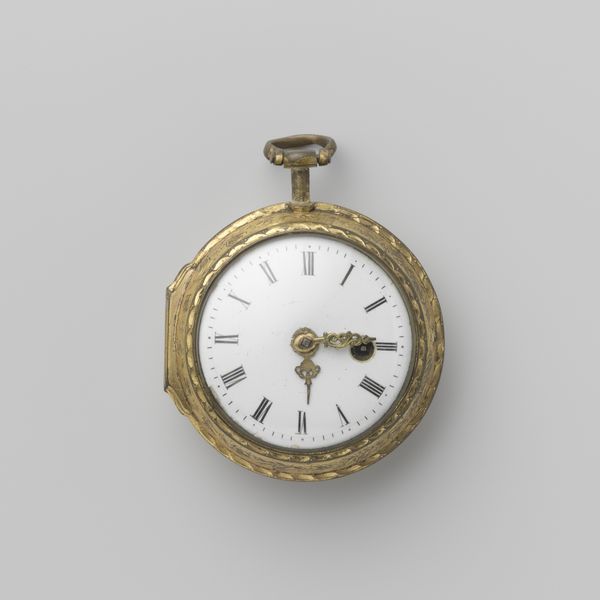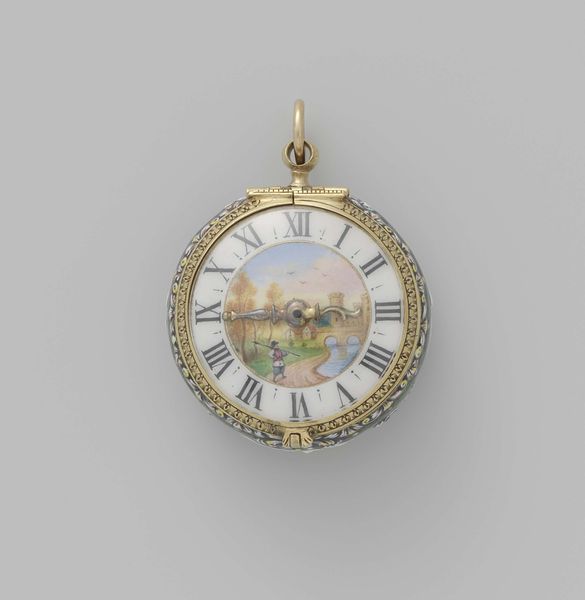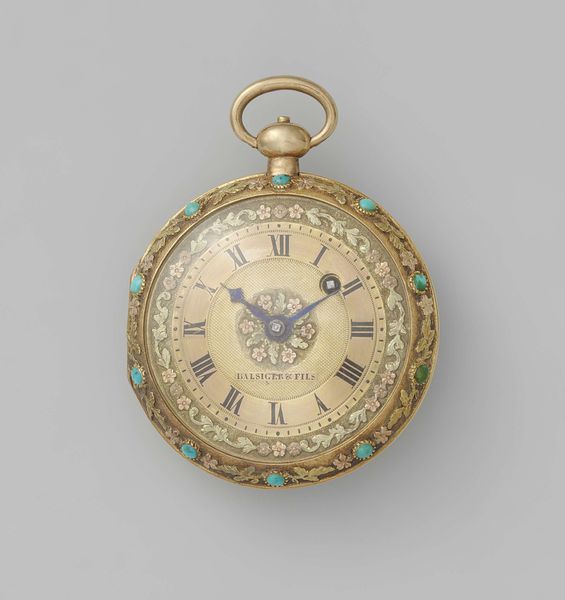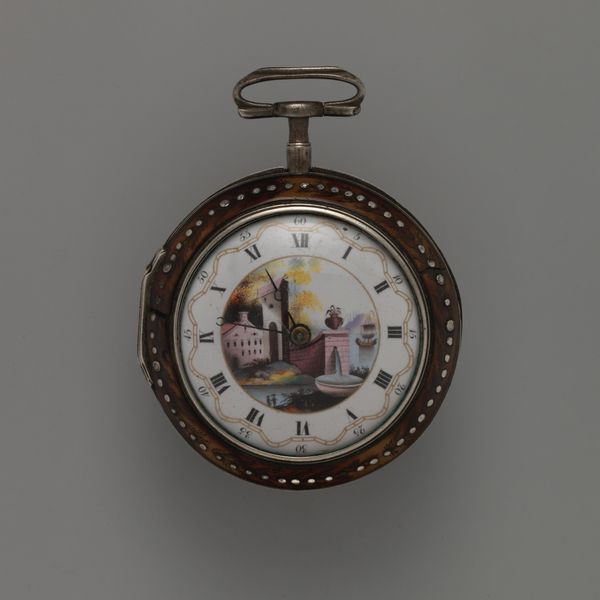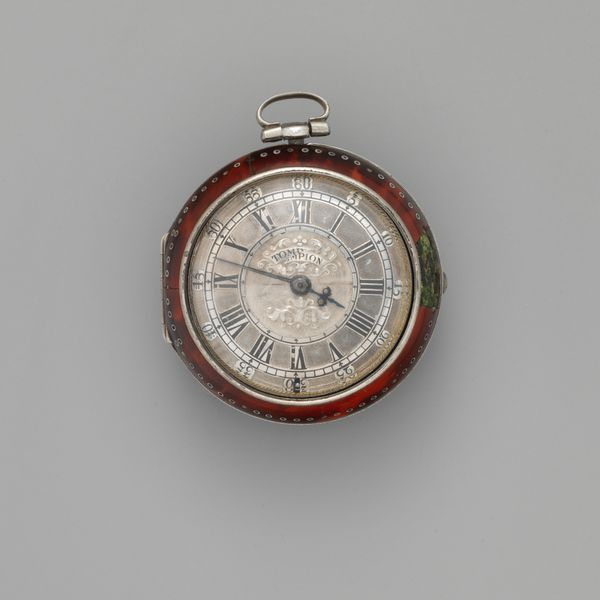
metal, enamel
#
baroque
#
metal
#
enamel
#
decorative-art
Copyright: Rijks Museum: Open Domain
Curator: Oh, what a delightful object! This is a watch crafted by Denis Bordier sometime between 1660 and 1690, appropriately titled “Watch with a Classical Bust." The combination of metal and enamel makes for a lovely effect, don’t you think? Editor: Absolutely charming! There's something so delicately frivolous about it. The light blue enamel and little painted flowers… it feels like a celebration of leisure. A bauble to remind you of the beauty you're about to miss while consulting the time. Curator: I agree about the effect. Remember, this was the Baroque era. Symbolism was critical; flowers signify not just beauty, but fleeting beauty. Their presence speaks volumes about mortality and *memento mori* amidst opulence. Time, as shown by a timekeeping device, and beauty intertwine to make an allegorical point. Editor: The political undertones interest me. A luxury item like this during the reigns of Louis XIV suggests a wealthy, courtly context. It feels like a conscious display of status. Time becomes a commodity, measurable and, therefore, controllable by those in power. Is it almost an intimidation tactic? I'm better than you: I can see my time! Curator: An excellent point! The mastery and craftsmanship inherent in this piece underscores that very privilege, it reinforces social stratifications and the concept of access as privilege in 17th-century court culture. In many eras, personal decoration becomes public message. The symbolism transcends the decorative, doesn’t it? Editor: Definitely. Even the ‘classical bust,’ a phrase in the title but not actually shown in the watch design, is loaded. Classicism was back in vogue as an aesthetic and as a political reference—an aspirational connection to the Roman Empire’s supposed order. It seems like, more than a means to keep time, it’s more of a declaration. Curator: A declaration indeed. When considering timekeeping as a signifier of progress, order, or control during periods of political and social turmoil, it makes perfect sense this watch could assume significance beyond mere measurement. These miniature canvases capture an intriguing mix of aesthetics and values, as a testament to both the object’s creator, its historical circumstances and social value in 17th century Europe. Editor: In essence, far more than a watch, it encapsulates an entire era—its values, its anxieties, and its obsessions with both fleeting beauty and enduring power. Thank you for highlighting these important symbols.
Comments
No comments
Be the first to comment and join the conversation on the ultimate creative platform.
